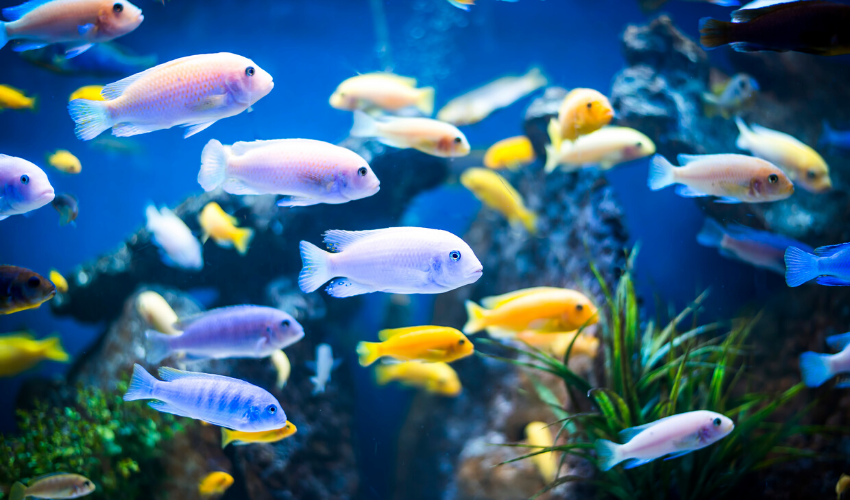Just Keep Swimming: Common Fish Diseases and How to Avoid Them
- Posted on

Wondering why Mr. Grumpy Gills seems a little down lately? Just like dogs and cats, fish require proper preventative care to keep them healthy and happy.
Learn more about common fish diseases and how to avoid them with this helpful guide to prevention, symptoms, treatment, and more!
Cotton Mouth
The name may sound fluffy and harmless, but cotton mouth is a nasty bacterial infection prone to attacking cold water and tropical fish. The telltale signs of this bacteria are white or grey spots around the fish's head and mouth that may turn yellow or brownish red. Cotton mouth is easily mistaken for a fungal infection due to the similarity in symptoms, but it's important to identify the differences between the two in order to treat each appropriately.
Fortunately, there are a few quick fixes for treating this ailment. Medications can be purchased easily at your local pet supply store. Furan 2 and Melafix are the most common treatments for cotton mouth. It may be necessary to quarantine infected fish in a "hospital tank" until well. Use aquarium salt to sanitize your main tank and remove the carbon from your tank filter while this process is ongoing. You don't want the carbon to absorb the helpful chemicals while cleansing your tank!
Dropsy
Dropsy is one of the most notorious causes of aquarium deaths. This disease is caused by poor water quality and can be managed most effectively by maintaining adequate temperature, proper filtration, and a vigorous cleaning schedule.
If you notice a fish with a swollen abdomen, poor appetite, and stressed behavior, remove it immediately to quarantine to avoid infecting the tank. Treatment typically includes antibiotics, though some aquarium owners have had success using Epsom salt to promote natural healing.
Swim Bladder Disorder
A fish's swim bladder is a very delicate system that keeps them afloat. When compromised, a faulty swim bladder will cause a fish to sink or float, sometimes swimming vertically. This condition most commonly affects goldfish and bettas, however, swim bladder disease can affect any species of fish.
Prevention is the best cure for this ailment. Avoid overfeeding and keep your fish on a consistent nutritional regimen. If swim bladder disorder occurs, it may be necessary to hold off on feeding your fish for a few days until it has had time to digest the food already stored, alleviating the issue. Some DIY aquarium enthusiasts have had success feeding a frozen pea to their fish as an effective homeopathic remedy.
Hole in the Head
A name like "hole in the head" is enough to drive any aquarium owner bonkers. This ailment is characterized by lesions and small pits on your fish's head. As scary as this disease sounds, it is an indicator of a relatively simple problem; vitamin deficiency due to low quality feed or poor water conditions.
Supplement with aquarium vitamins and switch to a high quality diet.
Have a question about common fish diseases and how to keep your tank healthy? Ask the experts and learn more about good aquarium husbandry for happy fish.
